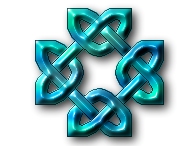


QUAKER GREGGS
Those of our clan who carry the Gregg surname might be surprised to know that a wealth of information exists regarding our migration to America and our travails preceding that migration. We are extremely fortunate to have our history lovingly detailed in a book that is available in most genealogical libraries. This book is Quaker Greggs, privately published in 1944 and the life work of Hazel May Middleton Kendall.
Except for the New England Greggs, most of whom are descended from a James Gregg and Margaret Cargill who arrived in Boston and settled in New Hampshire in the Late 1700,s the majority of Greggs in America appear to be the direct descendants of the Gregg line documented in Ms. Kendall's book. To quote Ms Kendall, her book "records the descendants of William Gregg the friend immigrant to Delaware 1682 from which disseminated nests of Greggs to Pennsylvania, Virginia, and North Carolina."
Here is a synopsis of some of the most interesting facts presented in this 500 page well Indexed book.
John Gregg, descended from the second oldest son of Black John of the Coat of Mail, buried at Dysart in Glenorchy May 26, 1519, received from King James I a silver studded cane in appreciation for his agreement to move the Greggs under his influence from Scotland to a settlement in County Antrim, Ulster, in 1618. John was also granted a Barony by James.
This cane has been passed down through Willian Gregg's line and is currently in the possession of Stanley Gregg of Fredrickstown, Ohio. According to Stanley, this famous cane's ivory head possesses several gaping holes where precious stones once resided. Apparently hard up, Greggs had long since liquidated them. Stanley is more than willing to talk to any Gregg interested in their history and has been gracious enough to send me photos of the cane. With the cane has passed down an oral tradition and the responsibility of being the family bard/historian. Stanley has been known to take the cane to his grandchildren's elementary school for show and tell, in full dress kilt.
William Gregg, the oldest son of John Gregg, was forced to leave his inheritance of the Glenarm Barony due to the Irish uprising of Carrifergus in May, 1653. William took his family to Waterford, Ireland. In 1681-1682 William's second oldest son, William, heard William Penn speak in Waterford about Quakerism and converted.In 1682, William followed Penn with his family (and cane) in tow to America, finally disembarking from the ship Caledonia for the Quaker settlement in the Delaware Brandywine region. Ms Kendall's book subsequently follows and enumerates a large number of descendants of William Gregg up to modern times.
Anyone wanting to talk with a modern day expert on these Gregg lines should contact F. Lee Nichols. Lee has been working many years to correct and update Ms. Kendall's encyclopedic work.
J. Kevin Gregg